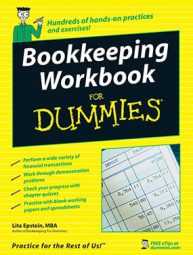A bookkeeper tracks all the financial transactions of a business and is responsible for identifying the account in which each transaction should be recorded. Accounting provides the structure you must use to organize these transactions, as well as the procedures you must use to record, classify, and report information about your business.
In most cases, the accounting system will be set up with the help of an accountant to be sure the information generated by that system will be useable and meets the requirements of solid accounting principles.
A bookkeeping system is designed based on the data needed for the two key financial reports — the balance sheet and the income statement. The balance sheet gives you a snapshot of a business as of a particular date. The income statement gives you a summary of all transactions during a particular period of time, usually a month, a quarter, or a year.
The key balance sheet accounts include:
Assets: Everything the business owns in order to operate successfully is considered an asset. This includes cash, buildings, land, tools, equipment, vehicles, and furniture. Each type of asset has a separate account. Another asset is the Accounts Receivable account (money due from customers who bought on credit).
Inventory: Products on hand that the business plans to sell.
Liabilities: All the money the company owes to others are considered liabilities. This includes unpaid bills (called Accounts Payable account), loans, and bonds. Each type of liability will have a separate account.
Equity: All the money invested in the company by the owners or stock holders is considered equity. Each type of equity, and possibly each owner in a small business, will have a separate account.
The key income statement accounts include:
Revenue: All the money a business receives in selling its products or services is called revenue or sales and tracked in these accounts.
Cost of goods sold: All money the company must spend to buy or manufacture the goods or services it sells to customers is tracked in these accounts. An account called Purchases is used to track goods purchased.
Expenses: All money that is spent to run the company that is not related specifically to a product or service being sold is tracked in expense accounts. For example, Office Supplies, Advertising, Salaries, and Wages are all types of expense accounts.

